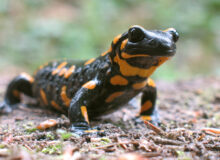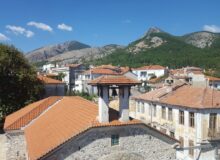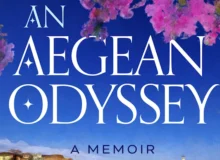Komotini
Komotini is a lively city in Thrace known for its rich history, diverse culture, museums, and scenic charm. A hidden gem worth discovering.

Komotini is in the heart of the Rhodope region of Thrace. Known for its rich history, multicultural character, and vibrant local life, Komotini offers a unique blend of Byzantine, Ottoman, and modern Greek influences. From its historical landmarks to its interesting museums and scenic surroundings, Komotini is a destination that should be on any Greece traveller’s map.
History of Komotini
The area was inhabited as early as the Byzantine era, with its name evolving over centuries. Originally known as Koumoutziná or Komotiná, the town’s name may derive from the Greek word komis (count), suggesting it was once the estate of a noble. The first recorded use of the name Giumouldzina (Gümülcine in Turkish) appears in Ottoman sources from 1344 CE. The modern name “Komotini” was officially adopted in 1920, reflecting its Hellenic heritage.
During the Byzantine period, Komotini was a strategic settlement due to its location on the Via Egnatia, the ancient Roman road connecting the Adriatic Sea to Byzantium (modern-day Istanbul). The town flourished under Ottoman rule, becoming a multicultural hub with Greek, Turkish, and Jewish communities. This legacy of diversity remains evident today in its architecture, cuisine, and cultural life.
After the Balkan Wars and the Treaty of Sèvres, Komotini was incorporated into Greece in 1920. It now serves as the administrative seat of Eastern Macedonia and Thrace and the capital of the Rhodope regional unit.

Things to Do in Komotini
Komotini offers a wide array of attractions for history buffs, nature lovers, and cultural explorers. Here are some of the top things to do in the town:
Archaeological Museum of Komotini
This museum is a treasure trove of ancient artifacts from the Rhodope region. It showcases items from prehistoric, classical, and Byzantine periods, including pottery, sculptures, and coins. The museum provides insight into the region’s long-standing cultural evolution.
Ecclesiastical Museum of Komotini
Located near the Cathedral of the Annunciation, this museum houses religious artifacts, icons, vestments, and manuscripts from local churches. It’s a serene space that reflects the spiritual heritage of the area.
Old Town and Traditional Mansions
Wandering through Komotini’s old town reveals neoclassical mansions and Ottoman-era buildings. Notable examples include the Mansion Dermertzoglou, which features Doric columns and ornate decorations that reflect the town’s architectural elegance.
The Clock Tower and Central Square
The iconic clock tower is a symbol of Komotini and stands proudly in the central square. This area is a lively hub with cafes, shops, and cultural events, perfect for soaking in the town’s atmosphere.
Byzantine Fortress
Remnants of the ancient Byzantine fortress can be found near the old town. Though partially ruined, the site offers panoramic views and a sense of the town’s strategic importance in antiquity.
Folklore Museum of Komotini
This museum presents traditional costumes, tools, and household items from the region’s rural past. It’s a charming stop for those interested in everyday life in Thrace over the centuries.
Komotini Municipal Park
A green oasis in the city, the municipal park is ideal for leisurely walks, picnics, and family outings. It’s also home to a small zoo and playgrounds.
Domaine Kikones Winery

Wine lovers should not miss a visit to Domaine Kikones, a local vineyard producing high-quality wines. Tastings and tours offer a delightful experience of Thracian viticulture.
Open-Air Markets and Bazaars
Komotini’s markets are vibrant with local produce, textiles, and crafts. The blend of Greek and Turkish influences makes for a unique shopping experience.
Cultural Events and Festivals
Throughout the year, Komotini hosts various festivals celebrating music, dance, and local traditions. These events highlight the town’s multicultural identity and community spirit
Multicultural Identity
One of Komotini’s most distinctive features is its multiculturalism. The town is home to a significant Muslim minority, including Turkish-speaking and Pomak communities. This coexistence is reflected in the town’s mosques, churches, and bilingual signage.
Cuisine and Local Flavors
Komotini’s culinary scene is a delightful fusion of Greek and Eastern Mediterranean flavors. Visitors can enjoy traditional Thracian dishes such as kavourmas (preserved meat), bougatsa (cream-filled pastry), and soutzouk loukoum (a sweet made from grape must and nuts). Local tavernas and cafes offer warm hospitality and authentic tastes.
Nature and Surroundings
Beyond the town, the Rhodope Mountains and nearby wetlands offer opportunities for hiking, birdwatching, and nature photography. The scenic drive from Xanthi to Komotini reveals lush landscapes and charming villages. The nearby Nymfaia Forest is a popular spot for outdoor activities and relaxation.





















